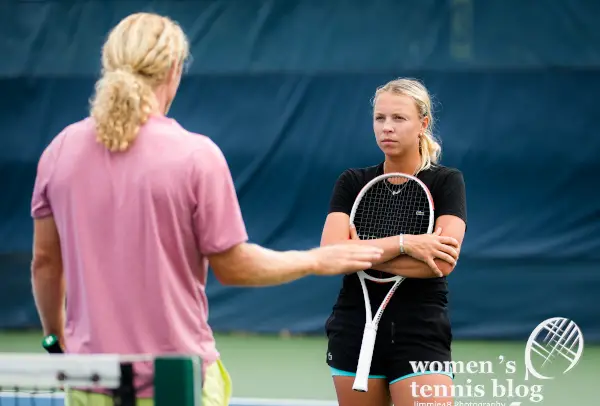Tennis coach Marcin Bieniek, founder of Enjoy Tennis Blog, explains the importance of proper repetition to create good tennis habits and also breaks down into steps the process of ditching bad habits that you’ve already formed.
Tennis is based on repetition. Players train every day to develop skills that will help them perform effectively during competition. These skills are built on thousands of hit balls to create habits that will be automatically executed. However, not every habit is positive and when we have a negative one, we should work to change it.

Looking at the best players in the world, we can see the power of habits. Roger Federer’s forehand is the same all the time – the technical part is the result of an automatic habit. Rafa Nadal’s serve preparation is famous and repetitious – he goes through the same steps every time he starts the point. Serena Williams’ offensive mindset is visible from the first to the last point – we won’t see her pushing the ball back when she tries to save a break point. All these examples show that if the proper amount of repetition is done, a solid habit will be created.
It is important to understand that habits are created both consciously and unconsciously. Of course, it is far more effective for athletes to create conscious patterns that they can control, but during the process, a lot of habits are created unconsciously. Unfortunately, most of these bad habits have negative impact on performance. The reasons behind unhealthy athletic habits are numerous: from low-quality practice to too many tournaments in a row, players develop skills that can limit their chances of achieving success.
If a habit helps you play well, you should continue with it, both consciously and unconsciously. However, if a habit causes underperformance, then you need to take the time to go through the process of changing the habit. It doesn’t matter if it is a technical problem with forehand or tactical awareness while serving, habit is a habit and approach should be the same.
Below you can find four steps of habit change that, if addressed properly, will have positive impact on performance and creation of a good routine.
1. Unconscious bad habit
That’s the first step that requires the perspective of other person. That is why coaches are so important in player development, because they give an external perspective that players are not aware of. Players can feel and believe that everything is fine, but the other person sees the real issue from the outside – the negative habit. In this stage, players make mistakes and are not aware of them.
2. Conscious bad habit
After understanding the problem, players start to pay attention to the faulty habit. They are not yet ready to control it and avoid it, but at least they are conscious of the situations when the mistake happens. It helps them to build consciousness and start having little impact on the process by paying attention to the mistake and trying to correct it.
3. Conscious good habit
The results of working in the second stage (conscious bad habit) are visible in this stage. Because of the conscious work, players are able to correct mistakes, but only when they are fully focused on the task at hand. They are able to control the new skill and do it quite consistently, but it is a conscious action that has to include both physical and mental work.
4. Unconscious good habit
The last stage is the finish line of changing a bad habit into a good one. By going through the different stages, becoming aware of the bad and good habit and making necessary repetitions, players start to use the new skill even while focusing on other things. Their mind and body collaborate and they don’t need conscious decisions to perform given action. It proves that new pattern is programmed and that the old one is dead and gone.
As tennis players, we should always strive for better performance. It can be achieved if hard work is balanced with conscious analysis of our game. By recording our matches, or having a private coach, we access the possibility to get important feedback that will be the base of deciding what, when and why we should change. The next time you have to change a habit, don’t be afraid of it – go through the stages and have fun on the court with automatic and effective movements.
Visit our Tennis Tips page for a lot more articles by tennis coaches. There you can learn how to improve specific shots and skills, handle pressure, adapt your game to all surfaces and weather conditions, choose the most appropriate tennis racquet, best strings, and much more.




